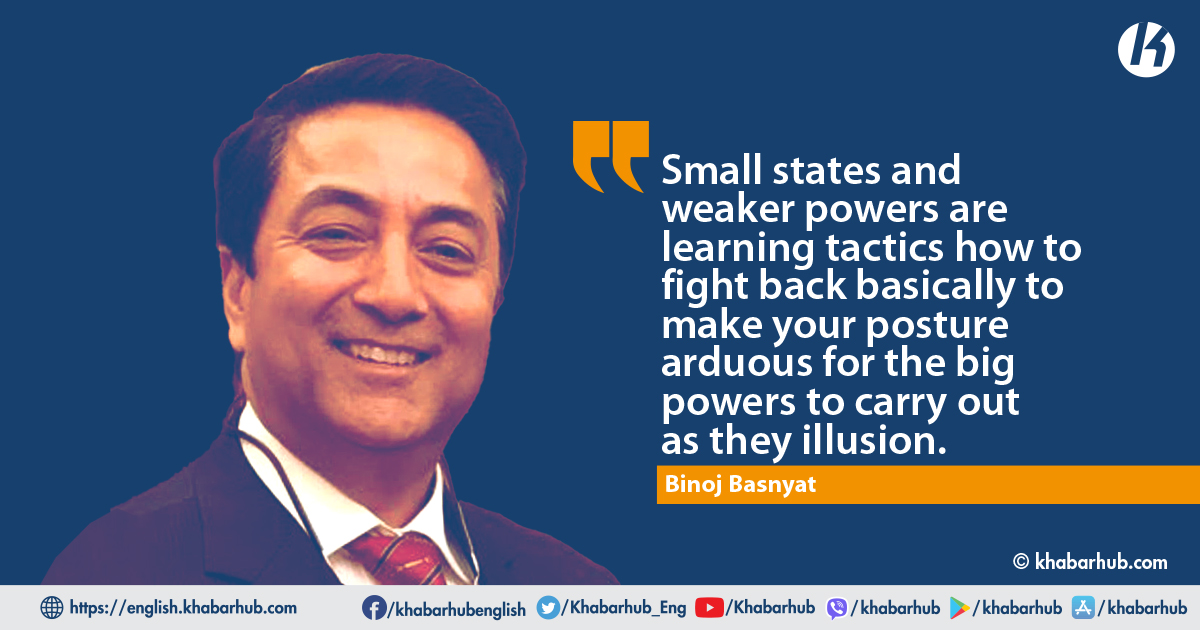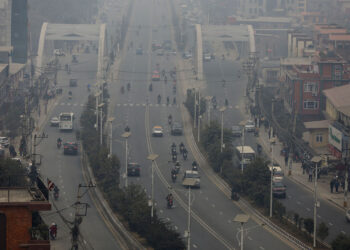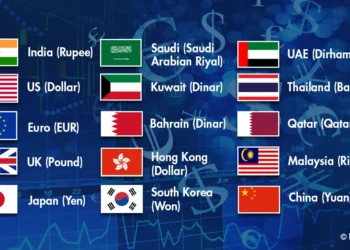Opinions, reflections, theories, strategies, and military assistance as regards Russian aggression in Ukraine and the strategic state of affairs have widely conversed.
The impact has been global and is also the ‘World War’ in a wide-ranging configuration. The UN, the global power the US, emerging power China, intergovernmental organizations, and obviously the European nations are well involved in one or the other form impacting the world and challenging the existing world order.
100 plus days have passed by and the war seems to be a long war with diverse intentions. When the world is divided to support Russia, Europe is uniting, South Asia is parting. South Asia is unraveling with interests versus international principles.
Minister of Foreign Affairs of India S Jaishankar on 3rd June in Bratislava, Slovakia at the GLOBSEC 2022 said that “Somewhere Europe has to go out of the mindset that Europe’s problems are the world’s problem but the world’s problems are not Europe’s problems, if it is you, it’s yours and if it is me, it is ours”.
This predicts a share of China and India’s tribulations and South Asia as well as the interests of the middle and great powers.
The War has Five Verges
President Putin’s aspiration to reshape the international and global landscape from US dominant world with an attempt to stand as the future European power politically and economically– therefore the Ukraine Crisis in Europe did not come as a surprise.
In the past two years, Putin’s political behavior has been seen to regain the former borders of the Soviet Union which are also the borders of the Russian Empire that goes back to the Eighteenth Century.
Putin acted in Belarus which was a soft coup where Alexander Lukashenko was forced out, he took steps in South Caucasus where he sent a peacekeeping force, and he accomplished in Kazakhstan where he pushed President Nursultan Nazarbayev out and compelled his own favorable government.
Though BRICS, Shanghai Cooperation Organisation (SCO), Russia, India and China (RIC) have come to endorse multipolarity and aim to promote peace, security development and cooperation, the trend is indecisive and ineffective on the Russian aggression.
The Russo-Georgian War of 2008 was belligerence accusing Georgia of aggression against South Ossetia and launched a full-scale land air and sea invasion of Georgia including its undisputed territory on 8th August referring to it as a “Peace enforcement operation”. This is also known as the first European war of the 21st century.
The 2014 Crimea peninsula annexation from Ukraine was the first part of the Russo-Ukrainian War that occurred in the same month as the current aggression on February 22-23.
There has been a range of international reactions to the annexation. In March 2014, the UN General Assembly passed a non-binding resolution 100 in favor, 11 against, and 58 abstentions in the 193-nation assembly that declared Crimea’s Moscow-backed referendum invalid.
In a move supported by the Lithuanian President, the US government-imposed sanctions against persons they deem to have violated or assisted in the violation of Ukraine’s sovereignty. Donetsk and Luhansk were also declared independent states before the launching of the offensive.
Second is the diplomatic path during the war, particularly that occurred in the month of April, which is directing policies and plans of the superpower the US and other great powers and that will occur post-war.
The third is finding an alternative to the dependency on energy and food and the global supply chain and the fourth is the instability in Europe complementing a geostrategic environment favorable for the rise of Asian powers.
Lastly, intergovernmental organization’s purposes in the War. Russian Foreign Minister Lavrov told a press conference “despite NATO having thirty members compared with six in the Collective Security Treaty Organization (CSTO) which Russia is part of, the fact is that NATO cannot determine the fate of Europe is already obvious”.
Though BRICS, Shanghai Cooperation Organisation (SCO), Russia, India and China (RIC) have come to endorse multipolarity and aim to promote peace, security development and cooperation, the trend is indecisive and ineffective on the Russian aggression.
CSTO’s three former members (Azerbaijan, Georgia, Uzbekistan) and one observer (Serbia, Union State) plus five members (Armenia, Belarus, Kazakhstan, Kyrgyzstan, Russia, Tajikistan) are part of NATO’s Partnership for Peace Program (PPP) designed to establish links between NATO and those nations that did not want to join the alliance, partners work on military and politico-military reforms. PPP provided the perfect vehicle to link “neutral” nations with the alliance.
SCO, established to ensure security and maintain stability across a vast Eurasian region, join forces to counter emerging challenges and threats, and enhance trade as well as cultural and humanitarian cooperation. It is also a transcontinental political, economic, security and military alliance.
Of the SCO members, besides Russia, four countries are Members of PPP. Of the eight members (China, India, Kazakhstan, Kyrgyzstan, Russia, Pakistan, Tajikistan and Uzbekistan) of SCO, four are Observer states interested in acceding to full membership (Afghanistan, Belarus, Iran, Mongolia) and six are dialogue partners (Armenia, Azerbaijan, Cambodia, Nepal, Sri Lanka and Turkey).
The BRICS countries have basically acquired a neutral posture on the Russian-Ukraine conflict but have their own distinction in the continuing complication The instability has three flanks one, China’s silence not to displease Russia and the nations of Europe along with diverting US responsiveness to Europe engaging Russia at the forefront.
Big powers like India have their own strategic concerns with priorities to bigger nations. Europe is connected, Europe’s borders are settled, and Europe is a union, unlike South Asia.
Two, India’s strategic balancing act with the US, China and Russia and third, the wars have witnessed a complex situation in history as Afghanistan’s war lasted twenty years and seven years in Iraq and Vietnam.
Strategic Surroundings bring about four choices with a long-drawn-out war and consent to transpire. NATO expansion as well formal participation though 80 percent of the states are outside Europe and Russia’s suffering from the war of economy to create an environment for Russia to bring to an end and lastly comprehensive peace effort by the United Nations.
When the world in the last two years is being wedged by COVID-19 the war now has added to the predicament.
Russia and Ukraine have the potencies of a third of global wheat and barley, over half of the world’s sunflower seed oil are produced in Russia and Ukraine. 36 countries count on them for more than half of their wheat exports.
One-fifth of the world’s fertilizers are exported by Belarus and Russia while Russia is the world’s second-largest exporter of crude oil after Saudi Arabia.
South Asian Strategic Environment
The reaction of South Asians has three factors leading plus divided into two folds. The bigger nations being driven by strategic interests and smaller nations by both national interests and international principles.
First is resentment which is the sensitivity of small nations that feel has been treated unfairly. Two, apprehension suspicion that the South Asian situation will revert to the regional environment of the 1970 and the argument if the state of affairs will come to its own borders?
Comparatively, systems do not seem to be in a place like the European Union (EU) and NATO in Europe; South Asian Association for Regional Cooperation (SAARC) is anxious but in a coma, Bay of Bengal Initiative for Multi-Sectoral Technical and Economic Cooperation (BIMSTEC) is attempting to stride.
The pace of Development was benefiting from financial order in a globalized world. The Russian invasion of Ukraine and spillovers have triggered a wave of financial disorder that will take time to re-systemize, the adaptation to this will, directly and indirectly, hinder the pace of development in the South Asian region due to the rise of price shortage of supplies and stoppage of exports.
Big powers like India have their own strategic concerns with priorities to bigger nations. Europe is connected, Europe’s borders are settled, and Europe is a union, unlike South Asia.
In search of new world order and the Changing geopolitical environment, the Russian veto is also important for India in the UN Security Council.
The deficiencies are food, energy, and finding a new regional mechanism to connect and assisting low-income buyers.
It is an opportunity for South Asians to get acts together for a new phase of regionalism and collectivism in the altering geopolitical international security environment. This elucidates how big nations and small nations in South Asia contradict.
India will not give access to new customers deserving country 23 countries the rate what we see happening with the vaccines we do not want to see with the wheat preventing a divergent to the high-income country with a greater possibility to buy that was seen vaccine.
Impact on South Asia and Small Nations concerns
South Asia being one of the least connected regions in the world and seen as the first region to undergo political and economic turmoil with rising commodity prices as well as economic and mismanagement and two years into the pandemic, its economies do share numerous similarities – and the fact that Sri Lanka, Pakistan, and Nepal are each currently facing and may face a mixture of economic and political emergencies.
The soaring prices in 2008 were the factor in triggering the Arab Spring.
South Asia will be impacted by trade, tourism, economic growth, connectivity, energy security, food security, forex generation and military modernization policies.
Economically, the region is facing reduced foreign earnings primarily due to the pandemic and increased foreign outgoings, particularly since the commodity price shock.
Prices will go up and shortages like in WW II, which people are witnessing with limited foreign exchange reserves and are unsustainable.
South Asian Nations together spend $63,606,086,665 fifth after the UK who spends $68,000,000,000. Russia gestured to opening the defense arsenal to India during the crisis in Ladakh against China.
UNDP Report said: “The negative impact of the war in Ukraine on FY2022.23 growth is expected to be moderate, so growth will begin to taper off in the second half of 2022”. As per the South Asia Economic Focus, the 6.6 percent growth in 2022 and 6.3 percent in 2023 can be revised downwards by 1.0 percent.
The pace of Development was benefiting from financial order in a globalized world. The Russian invasion of Ukraine and spillovers have triggered a wave of financial disorder that will take time to re-systemize, the adaptation to this will, directly and indirectly, hinder the pace of development in the South Asian region due to the rise of price shortage of supplies and stoppage of exports.
Tourism dependency has been impacted but the pandemic harmed remittance inflows and overseas opportunities remain limited, while earnings from tourism that is vital to Bhutan, the Maldives, Nepal, and Sri Lanka have declined dramatically.
Reduced income due to remittances Overseas workers’ remittances is economically important across the region. When countries in South Asia have faced previous economic crises, an outflow of workers to regions such as the Gulf served to counter domestic woes.
Food and Energy Security with India and Pakistan exception who are self-sustained in rice production South Asian countries are generally net importers.
Pakistan’s staple is wheat but it needs imports to top up domestic production, and Sri Lanka’s ban on fertilizer imports harmed its food production.
In foreign exchange to pay for vital imports, the region needs to meet its external debt obligations. Sri Lanka defaulted on this in April and has the highest external debt to GDP ratio, followed by the Maldives and Pakistan. India and Bangladesh have healthy foreign exchange reserves.
Economic woes inevitably impact the politics of the region.
It is time for the governments to formulate monetary and fiscal policies to counter peripheral alarms and shield the vulnerability. Arranging the groundwork for green, resilient and inclusive growth should prevail.
Defense dependability is leading to capability constraint, particularly for India which holds 46 percent, Bangladesh at 9.2 percent, Pakistan at 5.6 percent, and other nations that holds Russian equipment, when Russia being bogged down in the war.
This immediate backtrack of diplomatic relations with a superpower carries certain diplomatic repercussions. Both, the realignment of those interests with other superpowers, and maintaining existing bi-lateral relations with non-allies will be challenging.
South Asian Nations together spend $63,606,086,665 fifth after the UK who spends $68,000,000,000. Russia gestured to opening the defense arsenal to India during the crisis in Ladakh against China.
Political polarization is giving rise to domestic nationalism and financial constraint. The question of big power dependency exists but an assurance to Taiwan was answered during the QUAD meeting by the US.
Biden said “the policy has not changed at all” nodding that the US would be willing to use force to defend the island.
Population is losing trust in its leaders leading to political and financial crises like the strategic stalemate environment in Sri Lanka.
Emerging powers in South Asia have had to unexpectedly condemn a global superpower where many nations had several interests.
This immediate backtrack of diplomatic relations with a superpower carries certain diplomatic repercussions. Both, the realignment of those interests with other superpowers, and maintaining existing bi-lateral relations with non-allies will be challenging.
Conclusion
Small states and weaker powers are learning tactics how to fight back basically to make your posture arduous for the big powers to carry out as they illusion. Strategically it is the weapon system that you possess, military structures by approval of “asymmetric defense”, making certain that the military is vastly skillful, decentralized forces with aggressive military operations, and the assistance that you could seek from rivalry big powers. The supplementary would be finding political and diplomatic resolutions.
A collective geostrategic mindset of small and middle powers is greater than you think.
The stance of small nations measures up to Middle or great powers is equally important, or even more to larger nations to take into consideration the geopolitical stance of small nations in order to collectively or wholly understand international geostrategy for a new order.
Small nations like Nepal hold significance because it lies between regional powers China and India.
Recently, like the Ukraine crisis, it was easier for small nations to condemn such aggressive actions contradicting international law, principles and interests, whereas more complex for larger nations as strategic interest prevails.
Differed South Asia is an example, but when you sample the collective geostrategic mindset of small nations together – it is political strength that will provide a geopolitical picture of where the new world order is headed.
(Basnyat, a Major General (Retd) of the Nepali Army, is a strategic analyst)









Comment